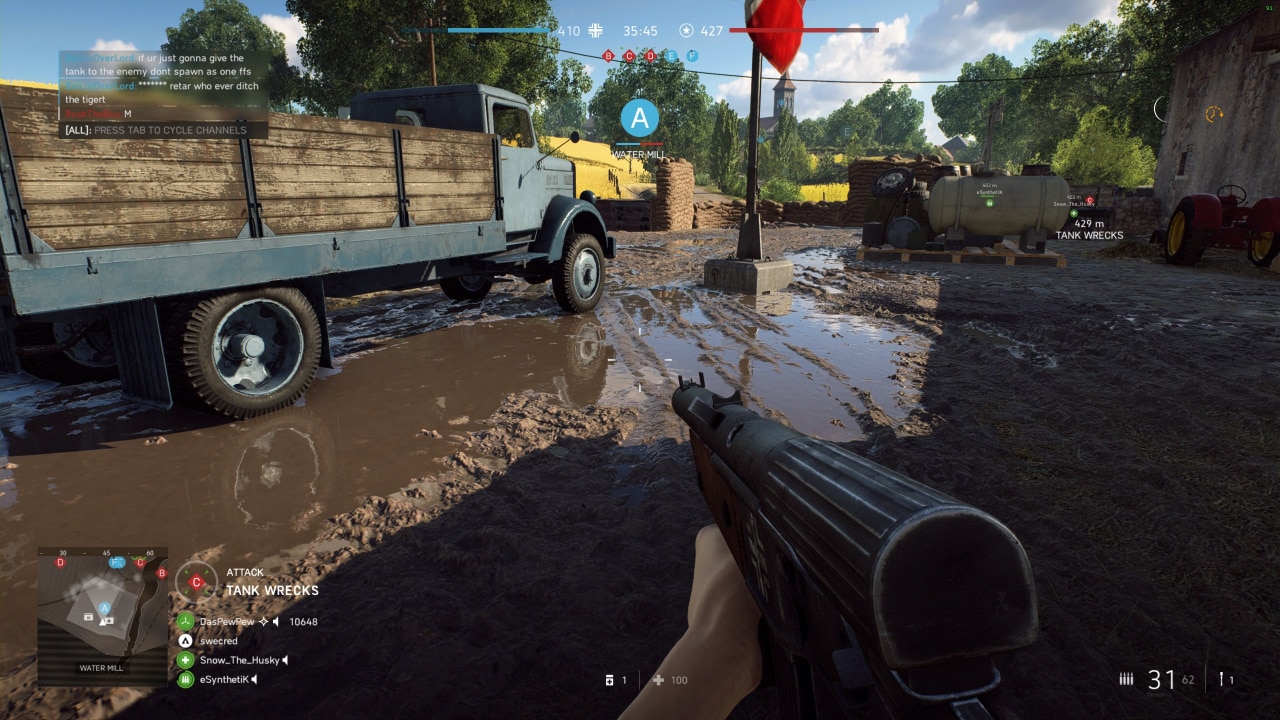Today it happened as many owners of Nvidia’s recent Geforce RTX 2000 series have been waiting for – a game has finally been released with support for hardware accelerated ray tracing in real time (RTX ON!). Not entirely unexpectedly, it was DICE’s recent Battlefield title that, through a newly released patch, received support for DirectX Raytracing, where it is specifically about reflections being rendered by technology.
During the afternoon, the editors sat and tested ray tracing in the game, and plan to release a more comprehensive article towards the end of the week. Until then, however, we want to share some early performance results. These are figures from a Geforce RTX 2080 Ti, as well as our first impressions of the graphical improvements brought about by ray tracing.
The measurements above come from a multiplayer match with 64 players on the Conquest map Arras, and which apparently the frame rate goes on a real performance penalty when ray tracing is activated. In the “Ultra” standard mode, it is basically a matter of halving the number of frames per second, which in part pushes the otherwise high-performance Geforce RTX 2080 Ti card below the 60 FPS line.
Fortunately, DICE has implemented several quality levels of ray tracing for reflections, which can be adjusted in the game’s menu. At a resolution of 2,560 × 1,440 pixels with the “Ultra” level of detail, Nvidia recommends setting the ray tracing level to “Medium” to stay consistently above 60 frames per second.
This also agrees well with our measurements, where the “Medium” setting keeps the card above the 60 FPS line and means an average of 90 frames per second. To further increase the frame rate, there is also the “Low” mode, which increases the buffer slightly for the minimum values down to the gold standard 60 frames per second.
Purely graphically, reflections in, for example, pools of water and cars look noticeably better with ray tracing set against the usual rasterization. In the multiplayer mode in Battlefield V, however, it is difficult to notice this added eye candy, as you move quickly from area to area and mostly try to concentrate on finding an opponent to shoot rather than contemplating the fire reflected in the window.
For single player mode, the point is felt ray tracing clearly more meaningful, as there are more often quiet moments to study the environments and soak up the atmosphere. Anyone who plays alone and does not compete against a lot of others is also usually less sensitive to lower frame rates, which further builds a case for performance-enhancing features such as ray tracing perhaps better suited outside the multiplayer sphere.
We will continue to investigate ray tracing in Battlefield V and add more cards from the RTX series to the performance measurements. It is clearly an interesting rendering technique that can make reflections look really realistic, for example – but with the very big flaw that you have to be prepared to really thumbs at the performance, which far from everyone is completely sold on.
More reading about Battlefield V
Have you tried ray tracing in Battlefield V? Share your thoughts in the discussion thread!















